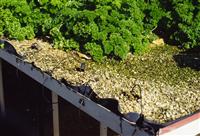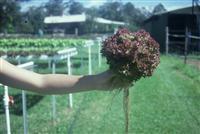
Study Hydroponic Production for Farms or Serious Installations
Course developed and supported by:
John Mason: Author of the best selling book "Commercial Hydroponics"
Dr Lynn Morgan PhD, renowned international hydroponic consultant and author.
- ACS has been teaching hydroponics since the early 1980's and provides a unique network of support services from bases in both the UK and Australia.
“More in - depth than Hydroponics I, Hydroponics II takes a closer look at a few plant species in particular. This course will especially suit inclusion in a 'Design your own Certificate' study option.” - Tracey Morris Dip.Hort., Cert.Hort., Cert III Organic Farming, ACS Tutor.
Lesson Structure
There are 11 lessons in this course:
- How the Crop Plant Grows
- Understanding how a plant grows in hydroponics, plant growth factors, manipulating and controlling growth, plant troubleshooting, resources, fruit set management, pollination issues, flower initiation, flower and fruit development etc.
- How to Run a Small Evaluation Trial
- Harvest and Post Harvest
- Tomatoes
- Capsicum
- Lettuce, Salad Greens and Foliage Herb Crops
- Cucurbits (Cucumber and Melons)
- Strawberries
- Roses
- Carnations
- Orchids
Each lesson culminates in an assignment which is submitted to the school, marked by the school's tutors and returned to you with any relevant suggestions, comments, and if necessary, extra reading.
Aims
- Determine and explain factors that influence the growth of a crop.
- Design and conduct a trial to evaluate the commercial prospect of growing a chosen hydroponic crop
- Determine appropriate harvest and post harvest treatments for different types of hydroponic crops.
- Determine an appropriate procedure for hydroponic production of a commercial tomato crop in any given location.
- Determine an appropriate procedure for hydroponic production of a commercial capsicum crop in any given location.
- Determine an appropriate procedure for hydroponic production of a commercial Lettuce, Salad Greens and Foliage Herb Crops in any given location.
- Determine an appropriate procedure for hydroponic production of a commercial cucurbit crop in any given location.
- Determine an appropriate procedure for hydroponic production of a commercial strawberry crop in any given location.
- Determine an appropriate procedure for hydroponic production of a commercial cut flower rose crop in any given location.
- Determine an appropriate procedure for hydroponic production of a commercial cut flower carnation crop in any given location.
- Determine an appropriate procedure for hydroponic production of a commercial cut flower Orchid crop in any given location.
MEET OUR EXPERTS
|
|
|
|
John L. Mason Dip.Hort.Sc., Sup'n Cert., FIOH, FPLA, MAIH, MACHPER, MASA
Author of the best selling book "Commercial Hydroponics", started teaching and practicing hydroponics in the early 1970's. Has worked across many areas of horticulture for 45 yrs; garden editor for Home Grown Magazine.
|
Dr Lynette Morgan B.Hort.Tech(Hons), PhD in hydroponic greenhouse production
Partner in SUNTEC International Hydroponic Consultants, Lynette is involved in many aspects of hydroponic production, including remote and on site consultancy services for new and existing commercial greenhouse growers worldwide as well as research trials and product development for manufacturers of hydroponic products. Lynette is also the author of 6 hydroponic technical books
|
Bob James QDAH. B. Applied Sc(Hort Tech),Grad Dip. Mgt, M;Sc (Enviro Sc.), PDC.
Bob has over 50 years experience in Government and Private Horticulture and Environmental Management Consulting.
|
How to Run a Hydroponic Trial
Many hydroponic growers make the basic mistake of not testing and perfecting their method for growing a crop, before they invest a lot of time and money in a full scale project. Running a samall trial may take time; but it is the best way to minimize the risk and reduce the chance of wasting a great deal of money and time.
Hydroponic grower trials attempt to simulate conditions under which a crop might be grown commercially, but on a much smaller, and less costly scale.
They often compare the success of growing a number of different plants, or groups of plants.
There are many different variables that can affect the success or failure of a hydroponic crop. These fall into different categories, including:
- Type of system
- Nutrition supplied
- Water supplied
- Plant cultivar being grown
- Environmental conditions (eg. Temperature, light, air quality)
- Exposure to pest and disease
- Cultural Management (eg. Pruning, spacing, harvest time, etc).
A useful trial is generally designed to compare one type of factor, and in order to do this effectively, all but that one type of factor must be kept the same.
For example: Four different tomato varieties are all grown in the same system, each being exposed to identical growing conditions (ie. same nutrition, same hydroponic system, same nutrition, etc).
The same variety of tomato is grown in four different hydroponic systems, but using the same nutrient, pruned and trained the same way, fed the same nutrient at the same rate, etc).
RUNNING A CROP TRIAL
 Growers are advised to conduct a field trial before growing any new crop or cultivar on a commercial basis. Too often growers spend a lot of money, time and effort setting up a system only to find the crop under performs or even fails. A field trial avoids many such problems by allowing the grower to assess and compare different crop treatments on a small scale before embarking on a full-scale effort.
Growers are advised to conduct a field trial before growing any new crop or cultivar on a commercial basis. Too often growers spend a lot of money, time and effort setting up a system only to find the crop under performs or even fails. A field trial avoids many such problems by allowing the grower to assess and compare different crop treatments on a small scale before embarking on a full-scale effort.
Examples of crop trials commonly used by growers include trialing different crops, evaluating new cultivars, and comparing growing media or feeding strategies.
Basics of setting up a comparison trial
A crop trial is basically an experiment that allows the grower to make comparisons between different treatments. The treatment might be an adjustment to a nutrient solution, trialing a new cultivar, trying out a different growing medium, etc.
The design and analysis of a meaningful crop trial will often require the help of a professional horticultural consultant. Before setting up the trial, the grower needs to decide on the size of the trial and the number of treatments (e.g. comparisons between new cultivars or different levels of a nutrient) to be tested. It is preferable to keep trials simple with minimal treatments to be tested.
All plants in the trial are divided into ‘plots’, with each plot consisting of a group of plants in the same location receiving the same treatment. For each treatment tested, one group of plants is a control plot, which receives the grower’s usual management program. The other groups of plants also receive the identical management program, except for the actual treatment itself. The purpose of the control plot is to enable a comparison to be made with the treatment plot(s).
‘Guard plants’ are placed are used around the edge of outside of the trial area. Their purpose is to prevent edge effects that may influence growth of plots on the outside of the trial. The guard plants do not form a part of the trial – they are part of the materials used to carry out the trial.
Plot positions must be done randomly to exclude experimental bias. Bias can be introduced into an experiment if the grower selects conditions for the treatment and control plots in a non-random fashion. A simple way to allocate plot positions is to number the plots, and then use a random number generator on a hand calculator to allocate plots.
Running the trial: records and recording
There are many measurements that may give valuable data, including solution analyses, foliage mineral analysis, plant height, leaf area and leaf area index (LAI), root dry weight, plant dry weight versus fresh weight, fruit quality assessment, water uptake, yields, marketable yields, taste quality assessment, shelf life and photographs. There may be a number of characteristics that the grower wishes to assess.
Evaluating the trial
The crop trial is evaluated by comparing the control plot against a treatment or a number of treatment plots. The assessment of the trial usually depends on statistical analysis which determines whether observed differences between control and experimental plots are likely to be due to real differences or chance occurrence.
Replication of plants and plots is commonly used to improve statistical evaluation. The higher the number of replications, the lower the margin for error in the trial.
In evaluating the trial, standard statistical analysis should be used to determine the true result of the trial. Simply looking at the plants and drawing a conclusion from them can be misleading. It is much more useful to quantify the trial by counting plants and carrying out a statistical analysis of the data in order to determine whether any observed effects are significant. In order to do this, the grower may need to employ the services of a statistician or horticultural consultant.
Prerequisite: Hydroponics I or significant experience.
What are the Assignments like?
Examples:

Interview two different people who have experience seriously growing plants in hydroponics. These might be hydroponic shop owners, commercial growers, or even just keen amateurs. They should be people who can answer the questions below from experience.Ask each of these people the following questions and make notes of their answers:
What has been the most difficult plant variety you have grown in hydroponics? This should be something you have succeeded with, but have had to put extra effort into succeeding with; and perhaps success has only come after a second or third attempt.
What type of system did you use to grow this in?
What do you think was the most critical factor in manipulating the growth of this plant; how did you control that factor, and how did your action affect the plant’s growth?
What type of commercial crops are most suited to commercial hydroponic farming in your locality, and why? Locate information on hydroponic trials that have been conducted by others.
Information you find might include evaluations of particular crops or varieties, evaluations of particular technology for hydroponics, or evaluation of various systems or methods for particular crops. You should try to find information from sources such as hydroponics magazines and journals, hydroponics books, the Internet, hydroponics experts, and any other sources you can think of.